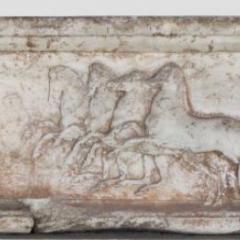We know that in eighteenth and nineteenth century Europe there was an outpouring of guidebooks, manuals, and even novels on the subject of manners, etiquette, and civility. What is less well-known is that a little later in many parts of Asia at a time of great social change there was a similar general concern with the broad question of how to behave. In fact, what is commonly understood as “Asian culture” was once understood more generally as “manners”. Yet manners in Asia, as in Europe, have been constantly changing. This book traces the history of manners in a country where good manners are taken very seriously, the Kingdom of Thailand.
Kings, princes, nobles, prime ministers, senior monks, active as well as retired army generals, politicians, poets, novelists, cultural bureaucrats, education administrators, and teachers have produced a large corpus of literature that sets out models of appropriate behaviour. Such behaviour includes how to stand, walk, sit, pay homage, prostrate oneself and crawl in the presence of high-status people, sleep, eat, manage bodily functions, dress, pay respect to superiors, deal with inferiors, socialize, use one’s time, and how to work and play. Discussions of manners become intense during political crises. For example, whenever there is a military coup the new regime always tries to implement a new set of manners.
Watch: How have Thai manners and civility changed over time?
Manners might be regarded as something rather remote from the bigger questions of history. Yet in Thailand, drawing on Buddhist religious doctrine about disciplining the self, manners have always been understood as covering three fields: the body, speech, and mind (kai waja jai). Understood in this way, manners can be understood as a regimen that aims to discipline the whole self. In this sense, the Buddhist conception of manners covers very similar territory to the European concept of habitus, which dates back to Aristotle, was studied by the medieval theologian, Thomas Aquinas, and more recently was the subject of sociologists such as Weber, Durkheim, Mauss, Elias, and Bourdieu. Habitus refers to the deep, automatic, and enduring dispositions in the way that one acts, speaks and thinks. In this respect the Buddhist doctrine of self-discipline and the European concern with habitus are more closely related that one might otherwise have thought. A history of manners thus concerns itself with the central question of how human beings change over time.
This was how the great sociologist Norbert Elias viewed it in his classic study of the history of manners, The Civilizing Process, first published in 1939, but popularised in the Anglophone academic world after it appeared in English translation in the early 1980s. Elias wrote that “what poses itself here with regard to the civilizing process is nothing other than the general problem of historical change” (Elias, 2000: 365). Yet Elias’s study of manners was limited to the study of England, France and Germany. While some scholars have applied his approach to other countries and regions of the world, studies of the “civilizing process” in Asian history are relatively few. A History of Manners and Civility in Thailand attempts to evaluate the utility of Elias’s concept of the civilising process to understanding historical change in Thailand. It argues that by contrast to common assumptions that social change in Thailand, especially during the colonial period of the late nineteenth and early twentieth centuries, was due to “Western influence”, changes in manners and civility in Thailand were in fact internally driven, in a similar way to that which Elias describes for European societies.
The book draws on a large Thai literature about manners and comportment going back at least 200 years. This includes Buddhist canonical texts and commentaries, court poetry, works on courtly protocol, more modern manuals on manners, etiquette guides, education curricula and textbooks, twentieth century “novels of manners”, and government edicts.
The book argues that what passes as “Thai manners” is in fact an amalgam of rules about how to act, speak, and think, which are a product of the growing interdependence between two great social classes, the Thai aristocracy and a rising “bourgeoisie”, or middle class. By the early twentieth century the power of the Thai aristocracy was in decline while that of the middle class was in the ascendant. As in Europe, the interdependence between these two classes led to what Elias has described as, “the courtization of bourgeois people and a bourgeoisification of courtly people” (Elias 2000: 93). Thai manners are thus an amalgam of two distinct forms of habitus that dominated Thailand in the twentieth century.
Elias argues in The Civilizing Process that in every country that once had a powerful courtly society, courtly styles of conduct had a huge role in shaping modern manners. What is distinctive about Thai manners and civility, particularly when compared to elsewhere in Asia, is the enduring role of the monarchy. Thailand’s monarchy survived not only the perils of the colonial period, but also the social revolutions that swept away the vestiges of courtly societies in other parts of Asia during decolonization and the Cold War. The effect of this was that courtly styles of conduct have been nurtured and sustained in Thailand to a much greater extent than anywhere else in Asia.
Another reason why courtly modes of conduct have survived for so long is the peculiar nature of Thailand’s middle class. For much of the twentieth century it has been divided between a royal bureaucracy, originally created by the absolute monarchy in the late nineteenth century and which still views its ultimate loyalty to the king, on the one hand, and on the other, an ethnic Chinese or “Sino-Thai” commercial class, which for a long time has been insecure about its status in Thailand.
The weak and divided nature of Thailand’s middle class for most of the twentieth century has meant that courtly ideals of good manners, which prize the expression of gentility, servility, deference, obedience, calmness, softness, reserve, and even silence, have for so long been the standard by which good behaviour is judged.
Research for this book was generously supported by grants from the Australian Research Council, UQ’s Faculty of Humanities and Social Sciences, UQ’s Institute of Advanced Studies in the Humanities (IASH), Kyoto University’s Center for Southeast Asian Studies, and Chulalongkorn University’s Department of History. It also benefited from many stimulating conversations with colleagues in History at the University of Queensland and in Thailand.



